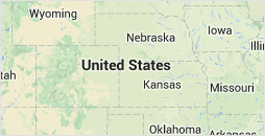Emily Clarke
PHONE NUMBER : -----
Map

Who is at Risk for Fraud?
We live in a world that's more connected than ever. Thanks to the Internet, we can make payments, send money and perform complex transactions without visiting a financial institution. The same goes for completing important documents. Protect your business from fraudsters today! Explore this website for advanced fraud management software solutions tailored to your needs.
But with that convenience comes many inherent risks. Fraud is on the rise. Companies big and small are using fraud management software to block transactions, and they see more frequent issues. In e-commerce alone, estimates show that fraud-related losses will climb to $48 billion by the end of 2023.
The truth is that every individual and company is at risk for fraud. It runs so rampant that people and organizations must take extra precautions to stay safe and mitigate losses.
Internal vs. External Fraud
For an organization, fraudulent activities fall into one of two categories.
Internal fraud refers to issues that occur due to the actions of someone within the company. For example, an employee with knowledge of an organization's operations and procedures can commit fraud against it. That could be through embezzlement, data theft, misappropriation of funds, etc. Even something as small as an employee giving a friend a discount constitutes internal fraud.
The second category is external fraud, which refers to crimes committed by individuals or parties outside the organization. Examples include hackers stealing financial data, a customer's false claims about undelivered service, ransomware attacks, etc.
Both types of fraud are common and can result in substantial losses.
Managing Fraud
Companies need to be proactive about fraud. It's not a matter of if criminals will attempt to commit fraud. It's more about when.
Organizations can invest in fraud management software. These platforms can help stakeholders assess current fraud risks. That could include performing a company-wide audit to identify potential vulnerabilities.
From there, companies can establish fraud governance. Governance includes developing systems and procedures that help reduce risks and cover what needs to happen if the organization falls prey to fraudsters.
Good software can also help with fraud detection and monitoring. Those activities are ongoing, and having software that can automate fraud detection across an enterprise makes a difference.
Author Resource:-
Emily Clarke writes about multiple payment platforms, payouts API, marketplace payouts and more. You can find her thoughts at API management blog.
